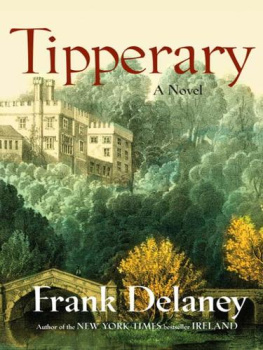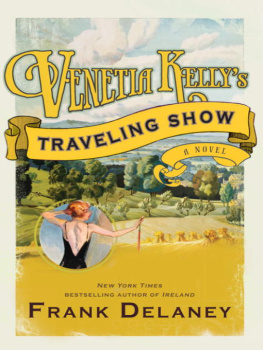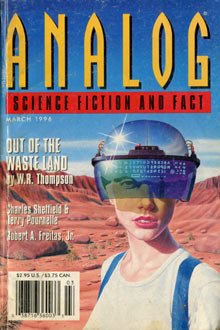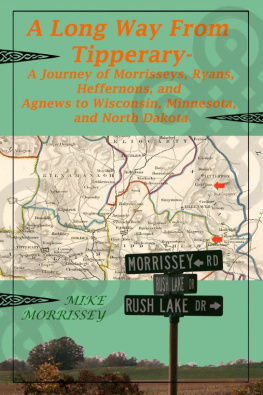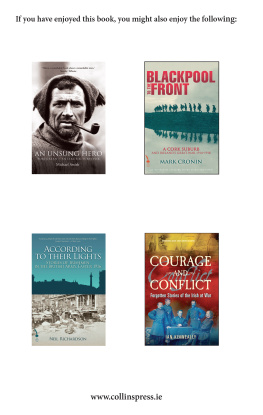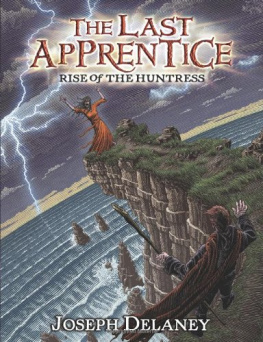Frank Delaney - Tipperary
Here you can read online Frank Delaney - Tipperary full text of the book (entire story) in english for free. Download pdf and epub, get meaning, cover and reviews about this ebook. year: 2007, publisher: Random House Group, genre: Detective and thriller. Description of the work, (preface) as well as reviews are available. Best literature library LitArk.com created for fans of good reading and offers a wide selection of genres:
Romance novel
Science fiction
Adventure
Detective
Science
History
Home and family
Prose
Art
Politics
Computer
Non-fiction
Religion
Business
Children
Humor
Choose a favorite category and find really read worthwhile books. Enjoy immersion in the world of imagination, feel the emotions of the characters or learn something new for yourself, make an fascinating discovery.
- Book:Tipperary
- Author:
- Publisher:Random House Group
- Genre:
- Year:2007
- Rating:4 / 5
- Favourites:Add to favourites
- Your mark:
- 80
- 1
- 2
- 3
- 4
- 5
Tipperary: summary, description and annotation
We offer to read an annotation, description, summary or preface (depends on what the author of the book "Tipperary" wrote himself). If you haven't found the necessary information about the book — write in the comments, we will try to find it.
Tipperary — read online for free the complete book (whole text) full work
Below is the text of the book, divided by pages. System saving the place of the last page read, allows you to conveniently read the book "Tipperary" online for free, without having to search again every time where you left off. Put a bookmark, and you can go to the page where you finished reading at any time.
Font size:
Interval:
Bookmark:
Also by Frank Delaney
Ireland
Simple Courage
ABOUT THE AUTHOR
FRANK DELANEY was born in Tipperary, Ireland. Before his novel Ireland, a bestseller and his first novel to be published in the United States, and Simple Courage, his American nonfiction debut, a career in broadcasting earned him fame across the United Kingdom. A judge for the Booker Prize, he has had several fiction and nonfiction bestsellers in the United Kingdom; he also writes frequently for American and British publications. He now lives with his wife, Diane Meier, in New York and Connecticut.
AUTHOR'S NOTE
Colonization is one of the world's oldest storieshistory, as the saying goes, is geography. Thus, the freedom struggles of countries trying to overthrow their invaders have given us some of our most dramatic legends and our most enduring myths.
The drama is universal. A volcanic core of indigenous people rages secretly against occupation, waiting to erupt. Around them resides a quiet majority, coping with domination. On top of both sits a foreign ruling class, imposed upon and exploiting those below. From afar, the controlling power rules severelyuntil the inevitable revolution comes.
This is a tale that gets told over and over, in differing ways. Some who joined the conflict fascinate their children with heroic memories. Others simply live out the occupied time, observing but not participating. And when it's over, the formal historians move in to research and interpret; some of them even believe sincerely in objectivity.
This book tells the story of a passionate romance within an epic struggle for nationhood, and the narrators who tell it embody these varying perspectives: A thoughtful wanderer considers his country's upheavals alongside his heart's obsession; the fierce activist records his tale for his nation's archive; and a modern commentator tries to remain objective, until he discovers, deep in his researches, that in Ireland everything is personal, especially the past.

B e careful about me. Be careful about my country and my people and how we tell our history. We Irish prefer embroideries to plain cloth. If we are challenged about this tendency, we will deny it and say grimly: We have much to remember.
But, you may argue, isn't memory at least unreliable? And often a downright liar?
Maybe. To us Irish, though, memory is a canvasstretched, primed, and ready for painting on. We love the story part of the word history, and we love it trimmed out with color and drama, ribbons and bows. Listen to our tunes, observe a Celtic scroll: we always decorate our essence. This is not a matter of behavior; it is our national character.
As a consequence of this ornamenting, we are accused of revising the past. People say that we reinvent the truth, especially when it comes to the history of our famous oppression by England, the victimhood that has become our great good fortune.
And do we? Do we embellish that seven hundred years since the Norman barons sailed to our southeast shores? Do we magnify those men in silver armor, though they stood only five feet six inches tall? Do we make epic those little local wars, often fought across rivers no more than some few feet wide? Do we render monumental the tiny revolutions fought on cabbage patches by no more than dozens of men with pitchforks and slings?
Perhaps we do. And why should we not? After all, what is history but one man's cloak cut from the beautiful cloth of Time?
Customarily, history is written by the victors; in Ireland the vanquished wrote it too and wrote it more powerfully. That is why I say, Be careful about my country and how we tell our history. And in this account of my life as I have so far lived it, you will also have to make up your own mind about whether I too indulge in such invention, in particular about myself.
All who write history have reasons for doing so, and there is nothing so dangerous as a history written for a reason of the heart. The deeper the reason, the more unreliable the history; that is why I say, Be careful about me.

Those paragraphs, written in a looping brown script, sat undisturbed for seventy-five years in a large wooden chest. They lay beneath a pile of clothing: a lady's green gown; a heavier and more ornate green brocade coat, with cream silk finishings; some brown leather gauntlets; a small velvet sack containing tresses of brown hair; and a pair of lady's buttoned boots.
The longtime owner of this trunk, an uncaring man with a runny nose, knew nothing about it or where it came from. It had been sitting for some years in a corner of the shed attached to his hardware premises and, ungifted by curiosity, he had never opened it. To this day he can't recall anything other than that he bought it from a pair of tinkers, whose tribe had been buying and selling antique furniture and junk all over Ireland in the early 1990s. The travelers, when traced and asked, said that they couldn't remember it, that they often bought and sold a vanload of stuff (or, as they pronounce it, shtuff) in that town.
Now the chest rests in an attic of a county library in the south of Ireland. The man who donated it bought it from the hardware shop; he recognized it from a description he had been given by a family friend who had often talked about it and who had searched for it.
As a piece of furniture or an antique, it has little interest. Made of oak, with sharp, squared corners, it has a simple brass lock and two ordinary, serviceable handles; and when the lid is raised, the timbers still yield a faint, musty smell, that familiar incense of the pastprobably from the fabric of the clothing. However, the antique objects, together with the written contents, assembled with other papers and letters, will soon form an exhibit in the museum section of the library.
It is expected to arouse strong intereston account of the main document and the story it tells. In a great personal drama, the two principal characters played out their lives against a backdrop of Ireland's most crucial historical period.
The narrator with the sloping handwriting was a man named Charles O'Brien, part wanderer, part journalist, many parts lover. After he wrote those opening Be careful sentences, he loaded his document so copiously with details of his world that it has been entirely possible to trace him and his story, and the lives of those he knew or encountered, and the forces and mysteries that became part of his life.
His document, apart from the slightly crumpled top and bottom pages, has remained in excellent condition. Although time and the weight of the clothing in the oak chest compressed the pages, Mr. O'Brien had been careful (and wealthy enough) to use high-quality writing paper, and he wrote with expensive ink, which did not fade; when even the innermost pages were gingerly pulled apart, they lost none of their legibility.
The handwriting helpshis big-handed script had no affectations; every word he wrote is rewardingly legible. As is his style, and in this, Mr. O'Brien was also a man of his time. Other than a breaking down of sentence length and an occasional formality, few major permanent changes have occurred in English writing fashions since the middle of the nineteenth century. The writers of the period, such as Robert Louis Stevenson (who lived from 1850 to 1894), could have been writing today, so fresh seems their general idiom.
Directly after his opening apologia, Mr. O'Brien tells the first of his many tales, a vivid account of an incident from his childhood.

Font size:
Interval:
Bookmark:
Similar books «Tipperary»
Look at similar books to Tipperary. We have selected literature similar in name and meaning in the hope of providing readers with more options to find new, interesting, not yet read works.
Discussion, reviews of the book Tipperary and just readers' own opinions. Leave your comments, write what you think about the work, its meaning or the main characters. Specify what exactly you liked and what you didn't like, and why you think so.

